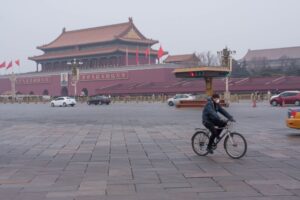A new network of air pollution sensors in London detected illegal levels of nitrogen dioxide (NO2) at 40% of its locations during the first eight months of them operating.
Breathe London, which is a City Hall-backed project, has seen 100 fixed sensors placed in locations across the capital which found levels of pollution exceeding legal limits not only in central London but also outer boroughs such as Barking, Kingston and Hillingdon.
Sensors on busy West End roads also recorded levels of NO2 10 times higher than on smaller streets just a few metres away.
The data will be used to inform the expansion of the Ultra-Low Emission Zone (ULEZ) in 2021.
The Mayor of London, Sadiq Khan said: ‘These findings, from our world-leading Breathe London sensor network, are a stark reminder that pollution hotspots exist across London and will refocus our efforts on improving air quality for all.
‘As we face up to the current climate emergency, I hope the success of this scheme will act as a blueprint for cities around the world to battle their own toxic air emergencies.
‘But we can’t win this battle alone. The government must take the air we breathe seriously and offer the support London needs to tackle this public health crisis.’
The Breathe London project is designed to complement the existing London Air Quality monitoring Network (LAQN) operated by King’s College London on behalf of some London boroughs, GLA, TfL and others.
It’s being delivered by a consortium led by Environmental Defense Fund Europe (EDFE).
In related news, the Breathe London team have also finished fieldwork of their ‘wearable sensor’ study, in which children across London wore air quality monitoring backpacks to school for a week to discover how they were affected by pollution throughout the day.
259 children and 33 of their teachers from five schools across London took part in the experiment, gathering 490 million measurements capturing detailed information on exposure to air pollution in cars, buses, trains and on foot.
Weighing just over 1kg, the sensors fit into lightweight bags and measure particulate matter (PM2.5 and PM10) and nitrogen dioxide (NO2) levels.
The latest Breathe London data can be viewed here.
Photo Credit – Pixabay
















